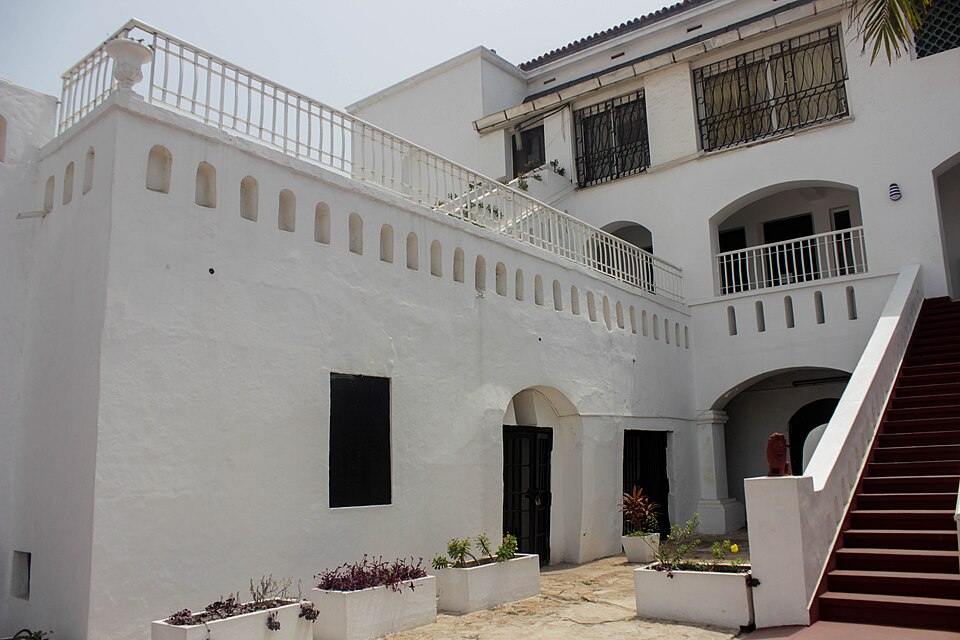Osu Castle, situated along the Atlantic coast in the capital of Ghana, Accra, represents more than a scenic fortress. It stands as a significant emblem of a tumultuous history and reflects Ghana’s evolution from a colonial stronghold to a sovereign state. Known as Fort Christiansborg, this castle is a notable and controversial artifact that functioned as a colonial administrative center, a key trading post, and a site of presidential power.
A Legacy of Shifting Hands:
The story of Osu Castle is a complex tapestry woven with threads of European ambition and African resilience. Construction began in the 17th century by the Danish, who christened it Christiansborg, meaning “Christian’s Fortress.” Its initial purpose was to facilitate the lucrative transatlantic slave trade, a grim reality that casts a long shadow over the castle’s history.
Over the following centuries, ownership of the castle shifted repeatedly between European powers: the Danish, Portuguese, Swedes, and British. Each nation left its mark on the structure, expanding and modifying it to suit their evolving needs and strategic objectives. This constant handover reflects the fierce competition for control of the Gold Coast (now Ghana) and its valuable resources.
From Trade to Power: A Shifting Role:
Osu Castle was first constructed for trade, but over time it developed into a hub for colonial governance. It served as the colony’s seat of government when the British eventually took it permanently. During this time, Ghana’s legal, economic, and social landscape was defined by laws that frequently harmed the country’s indigenous population. The castle evolved into a powerful representation of British imperial power and a constant reminder of colonial rule.
A Symbol of Independent Ghana:
With Ghana’s declaration of independence in 1957, Osu Castle took on a new significance. It served as the official residence and office of the President of Ghana, making it a powerful representation of the nation’s restoration to independence. Presidents such as John Atta Mills and Kwame Nkrumah, the first president of Ghana, occupied the castle for decades.
However, there were some who disagreed with the choice to have Osu Castle serve as the seat of government. With its walls resonating with the cries of enslaved people and the schemes of colonial powers, the castle continued to serve as a sobering reminder of the nation’s traumatic past for many. Critics contended that it was troublesome to use such a building as a representation of the new, independent Ghana, implying a gap between the country’s historical realities and its ideals.
Transformation into a Presidential Museum:
President John Atta Mills took action to move the presidency to Jubilee House, a brand-new structure, after realizing these issues. The John Mahama administration formally converted the castle into a presidential museum in 2013. This momentous change signaled a deliberate attempt to recognize Ghana’s darker periods and to use the castle as a site for education, reconciliation, and commemoration.
Osu Castle Today: A Site for Reflection and Education:
Today, Osu Castle stands as a powerful reminder of Ghana’s complex and multifaceted past. As a presidential museum, it serves as a valuable resource for understanding the country’s colonial history, the struggle for independence, and the evolution of Ghanaian governance. Visitors can explore the castle’s chambers, learn about the transatlantic slave trade, and reflect on the enduring legacy of colonialism.
The transformation of Osu Castle into a museum is a testament to Ghana’s willingness to confront its past and to use it as a springboard for a more just and equitable future. It’s a place where visitors can engage with the complexities of history, learn from the past, and contribute to a deeper understanding of Ghana’s journey towards independence and national identity. Osu Castle in the capital of Ghana is not just a building; it’s a living testament to the enduring spirit of Ghana and its people.
